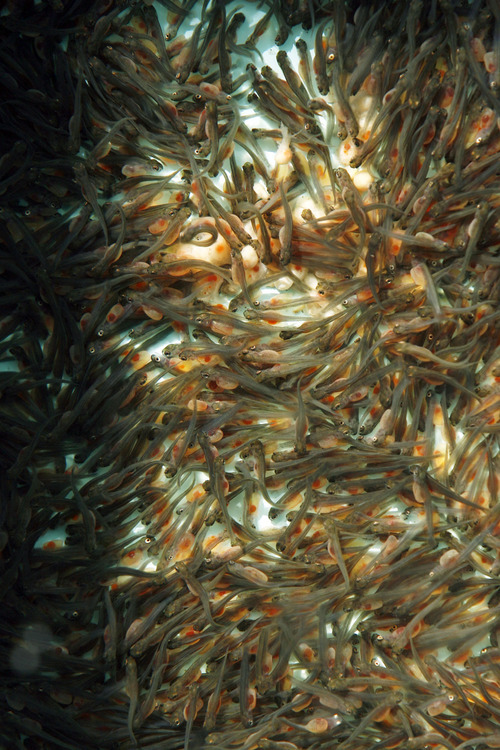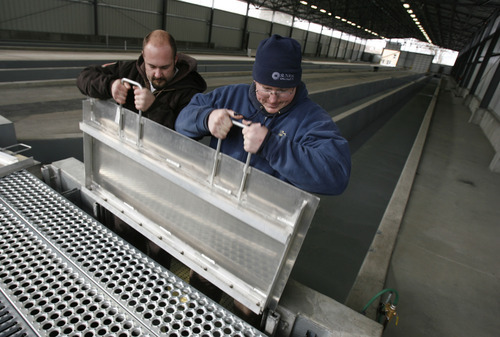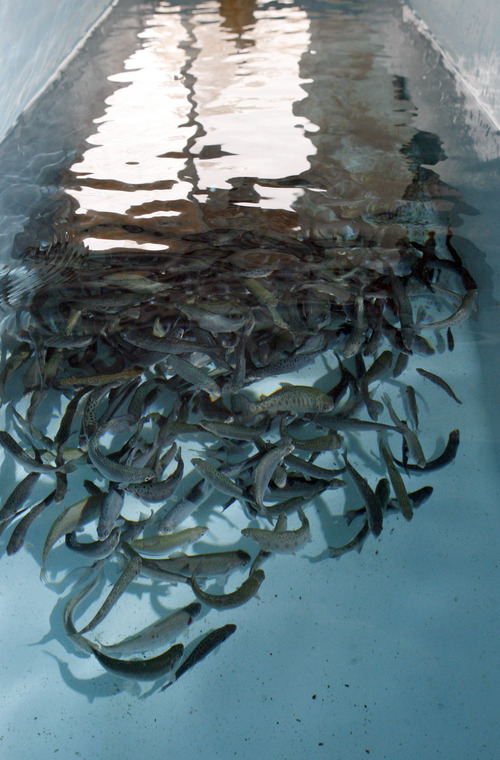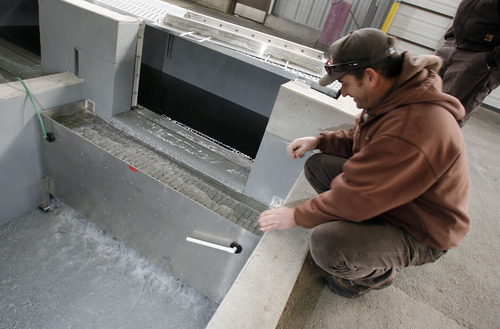This is an archived article that was published on sltrib.com in 2011, and information in the article may be outdated. It is provided only for personal research purposes and may not be reprinted.
Springville • Utah's oldest fish hatchery is now its newest.
When water was turned into the reconstructed runways Monday at noon, it marked a new era for the Springville Hatchery. The facility was formally established in 1909 but is believed to have been used as a rearing facility as early as the 1890s.
The $4 million state-of-the-art facility features oxygenated water, drums to skim debris, an ultraviolet light system to kill disease-causing organisms such as the spores that cause whirling disease, covered raceways to prevent birds from bringing in disease and new visitor facilities.
"It used to be that you could turn the water on and raise fish," said superintendent Ric Hartman. "Times have changed."
Hartman, who lives on-site in a house dating back to the 1890s, managed the Springville facility in April of 2005, when whirling disease hit what was once Utah's most productive hatchery. About 100,000 pounds of trout — approximately 500,000 fish — were destroyed when the trout-affecting disease was discovered.
"That was a bad day," he recalled.
Although the raceways on the west side of U.S. 89 — Springville's Main Street — were occasionally used to raise endangered June suckers to be planted in Utah Lake and some hybrid wipers, the hatchery on the east side was closed for the reconstruction project. The modernized hatchery is expected to produce 120,000 pounds of mostly catchable rainbow trout annually, about a half-million fish in all.
The state ran out of money to redo the west-side facilities, though the treated water can flow under U.S. 89 into the older west-side raceways that may be used in the future to raise catfish, another species in high demand. Utah mostly purchases catfish from eastern facilities.
Hartman, assistant superintendent Jason Tull, wildlife specialist Shane Gurley, Bodell Construction's Ryan Park and a few other Division of Wildlife Resources employees watched nervously when the first water was turned into the raceways on the north side of the new building.
"It's like Christmas morning again," Gurley said.
Tull said he was most excited to start stocking fish around the state. Most of the fish from Springville are slated for the increasingly-popular community fishing ponds located across the Wasatch Front. Tull said he enjoys watching families, and especially kids, get excited when a truck filled with catchable fish pulls up to a pond.
"I used to tour fish hatcheries as a kid and I went to school to do this," he said seconds before the water started flowing.
"I've been waiting for this day for five years," said Hartman. "It's exciting, but we have a really big learning curve."
Visitor facilities, including a parking area and new restrooms, were included in the reconstruction price. Hartman said groups can start visiting the hatchery by appointment in the spring.













